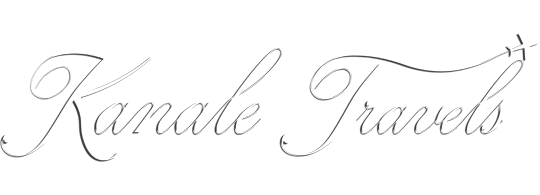Back on the bus, we headed to the Winter Palace and the State Hermitage Museum. But before arriving there, we passed by Decembrists Square, or as it is now known, Senate Square. Natasha pointed out the equestrian statue of Peter the Great, the focal point of the square. The statue is called The Bronze Horseman, after the poem of the same name by Alexander Pushkin. Remember him from yesterday? It sits atop a huge rock called the Thunder Stone. (Fun fact I learned later: The Thunder Stone supporting the Bronze Horseman statue weighs four and a half times more than the Big Rock (“Levitated Mass”) at the Los Angeles County Museum of Art (LACMA) in the United States. The Thunder Stone was transported by human power alone; no use of machines, no use of animals).
After disembarking in front of the museum, my wife and I had maybe half an hour before we had to queue up with the rest of the group. We decided to walk around the massive Palace Square (Dvortsovaya Ploshchad). The square takes its name from the Winter Palace, as you may have guessed. I later learned many important events in Russian history took place on these grounds. Among them: From here, the palace was stormed, marking the beginning of the October Revolution. Bloody Sunday happened here, too. Following the Great Patriotic War, troops marched through the Triumphal Arch of the General Staff Building and into the square. On a more positive note, many festivals, parades, concerts, and other events are held here throughout the year.

 Palace Square is paved but empty. On one side is the General Staff Building. Bow-shaped (I think it resembles the Greek letter Omega more than a bow), and featuring the Triumphal Arch, the building is topped by what’s called the Chariot of Glory. The building’s two wings are united at the arch. The east wing is now part of the museum complex. Opposite the Staff Building and across the square is the Winter Palace and Hermitage Museum.
Palace Square is paved but empty. On one side is the General Staff Building. Bow-shaped (I think it resembles the Greek letter Omega more than a bow), and featuring the Triumphal Arch, the building is topped by what’s called the Chariot of Glory. The building’s two wings are united at the arch. The east wing is now part of the museum complex. Opposite the Staff Building and across the square is the Winter Palace and Hermitage Museum.
 Taking center stage in the square is the Alexander Column. It is a single-piece red granite obelisk, designed by our friend Auguste de Montferrand, whose work we became acquainted with yesterday at St. Isaac’s Cathedral. It commemorates Russia’s victory over Napoleon in the Patriotic War of 1812, also known as The French Invasion of Russia. The column is the heaviest ever recorded. The column’s pedestal features bas-relief depicting military symbols. An angel supporting a cross rests atop the column. It is said the monolith weighs about 600 tons. Workers were able to erect it without the use of cranes or other modern machinery in less than 2 hours.
Taking center stage in the square is the Alexander Column. It is a single-piece red granite obelisk, designed by our friend Auguste de Montferrand, whose work we became acquainted with yesterday at St. Isaac’s Cathedral. It commemorates Russia’s victory over Napoleon in the Patriotic War of 1812, also known as The French Invasion of Russia. The column is the heaviest ever recorded. The column’s pedestal features bas-relief depicting military symbols. An angel supporting a cross rests atop the column. It is said the monolith weighs about 600 tons. Workers were able to erect it without the use of cranes or other modern machinery in less than 2 hours.
On our way back toward the entrance, ran into two men from Africa. We caught sight of them in the square. Immediately we felt drawn to each other. If I am being honest, I’d have to admit we were surprised to see them here. We struck up a conversation. Their backstory is that they are from different African countries. One came to Russia, then invited the other to come.
We only had a couple of minutes to talk because our tour of the Hermitage Museum
was starting in a couple of minutes, and they had to get back to their work. My wife asked them what was the hardest part about living in Russia. I thought they would say the weather. One pointed to his skin. This was in stark contrast to what we’ve experienced during our (very short) time here. I really, really wished we had more time to talk with them, maybe exchange info.




Comments are closed.